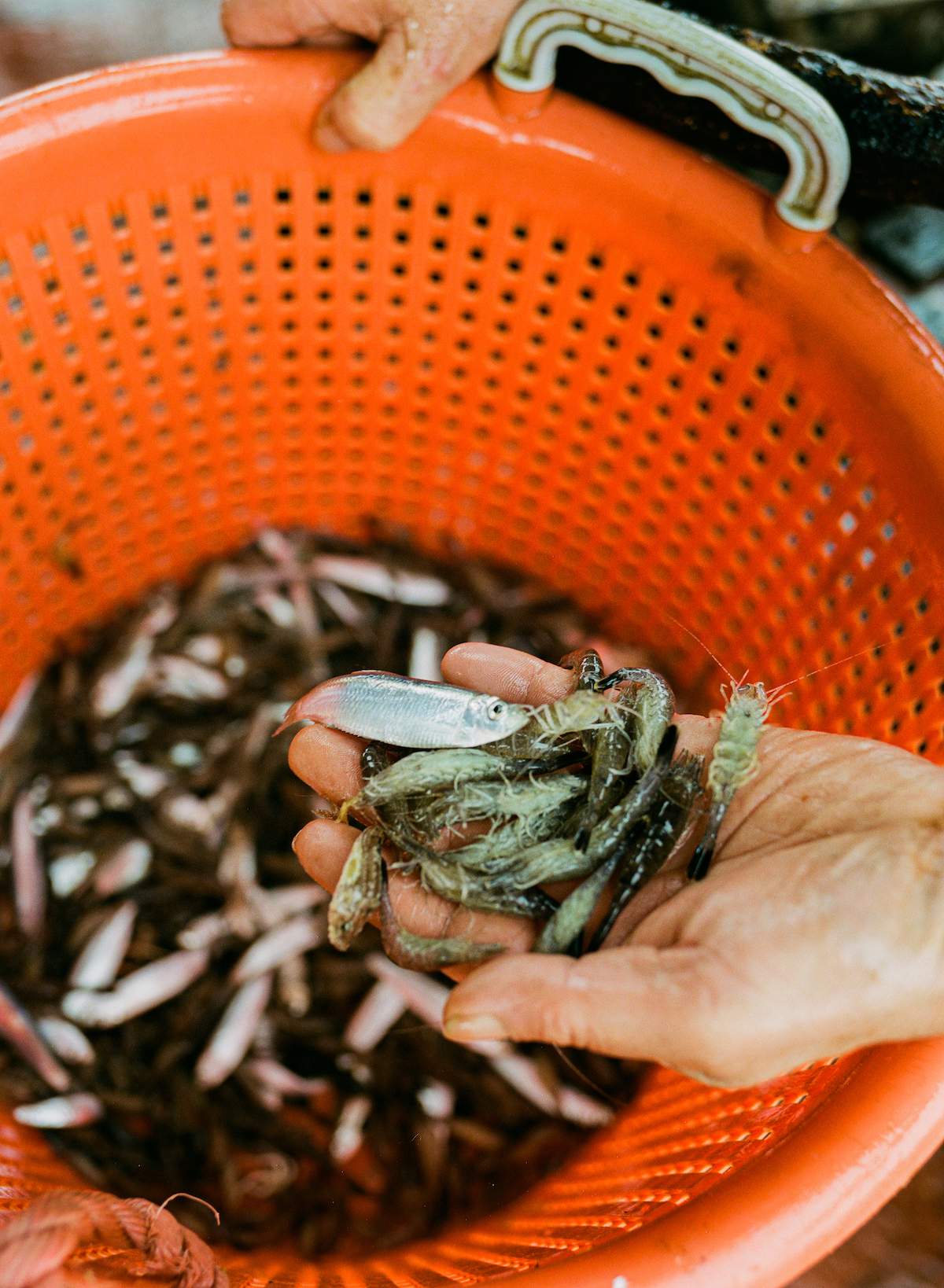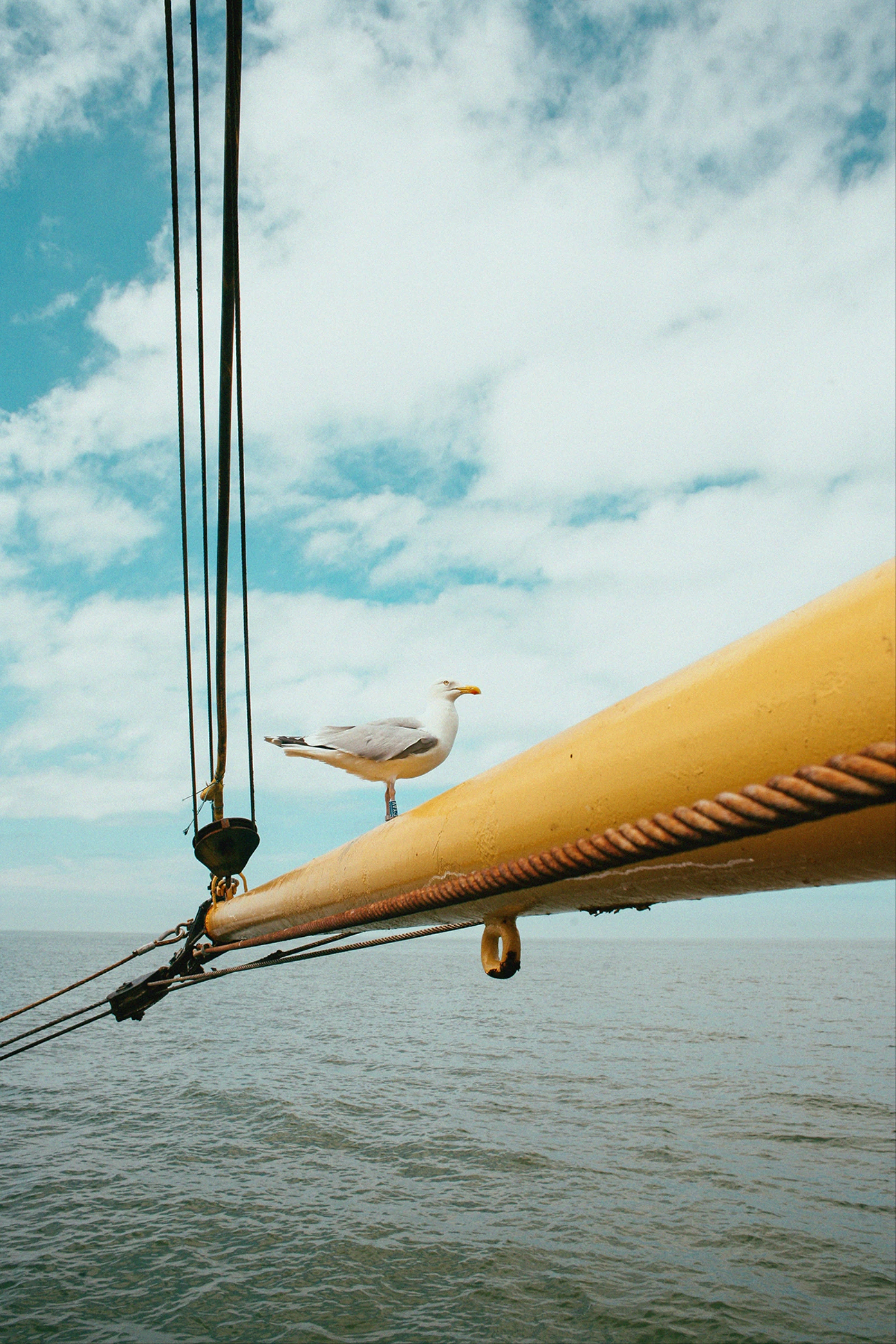A version of this article originally appeared on VICE Belgium.
A few summers ago, in 2019, photographer Mayli Sterkendries boarded a boat in Ostend, a costal city in northern Belgium. The Broodwinner (“Breadwinner” in Dutch) was built in 1967 and has been used as a training ground for local fishermen ever since.
Videos by VICE
“A friend told me about the fishermen, describing them as big characters,” Sterkendries tells VICE. “He knew a few of them personally – the stories he told me immediately made me want to find out more.”
Back on shore, she collated all her images into an intimate portrait of the close-knit community, naming the resulting photo series “Vesche Vis”, or “fresh fish” in the local dialect. In February 2022, she decided to check in with the crew again.
The complications of coronavirus and Brexit has meant it hasn’t all been smooth sailing for the workers since Sterkendries’ first visit. Still, they’re continuing to cruise for fish while giving apprentices some much-needed experience on the high seas. “It did me good to go back there,” she says. “We’re talking about a boat that’s been around for over 50 years now.”
Between the photographer’s trips, the fishermen had done the boat up and recruited a pair of new colleagues. Sterkendries’ approach to documenting the working lives of these seafaring men and their difficult, dangerous jobs, had changed, too.

The second iteration of her project, simply called “Broodwinner”, is a more collaborative affair. Sterkendries had been approached by Julie Verdin, an audio-visual art student who wanted to conduct interviews with the fishermen for a project. Max Bekaert, a videographer joined them on the boat, too. “The idea,” Sterkendries says, “is to exhibit our work together after we’ve developed everything.”

Sterkendries long associated the world of fishing with her father, a sturdy, raspy-voiced man with a single pierced ear. “He looks like Captain Birdseye,” she laughs. With that in mind, she expected to meet fishermen who had similarly booming voices and strong personalities, and she wasn’t disappointed by who and what she found on the Broodwinner. “Their faces are strong and honest and, yes, they do shout a lot to be heard.”
Fishing might be one of the oldest industries around, but many of us remain ignorant about what exactly it is that fishermen get up to on their trawlers all day. On board, Sterkendries had the time to find out as the workers discussed the ins and outs of their lives, leading her to a better understanding of the demands and difficulties of the job.

Out on the North Sea, patience is a virtue. The fishermen on the Broodwinner are up at dawn to offload their catch at Ostend’s fish market, which only closes two days a year. “Navigating out of the port, moving far away from the coastline and sorting all the nets out takes a lot of planning,” she says.
The years have been tough for fishermen. To turn a profit, they need to land a decent amount of fish each day – a task that is only getting more and more difficult as waters become increasingly overfished.
The pandemic has led to fewer restaurants to purchase their wares. As it stands, there is less fish to catch and less money to be made – even if the price of fish at market is rising.
Then there’s Brexit. For the bulk of the last 350 years or so, British waters have been vital for Belgian fishermen. But the UK’s decision to leave the European Union in the summer of 2016 has had ramifications for all manner of industries and workers across the continent, and Ostend’s fishermen are no exception.
It wasn’t until January 2021 – after years of anxiety and uncertainty – that a solution was negotiated. Belgian authorities were granted 17 licenses to fish within a 19 km area of the UK, though 14 EU member states, including Belgium, are unhappy with the distribution of the licences and its effects on their fishermen.

In recent years, a push towards cleaner sources of energy has seen huge wind turbine farms built all over the North Sea. Ostend is home to several of these large-scale developments, which has huge ramifications for local fishermen. Erecting turbines means removing the sandbanks where fish lay eggs, with the knock-on effect of there being less stock in the vicinity.
The turbines are also powered in part by huge underwater cables – ones which boats like the Brodwinner can’t sail over, which means swathes of the sea are now completely off-limits. You can see why morale can occasionally be low on boats like the Broodwinner.

Despite the difficulties, the bond between the fishermen remains strong. “They were always laughing and joking,” Sterkendries recalls. “It can be easy to misread these men when you see them in the port because they’re imposing, but they’re actually extremely gentle with one another.”
It’s a difficult, unglamorous profession but there are still young people out in Ostend and beyond who want to work on the boats for a living. During her time with the trawlermen, Sterkendries got to know the young trainees, some of whom had decades-long ties to the industry. “Their grandfathers were fishermen. They want to uphold the family tradition.”
Check out photos from both of Mayli Sterkendrires’ trips below.










